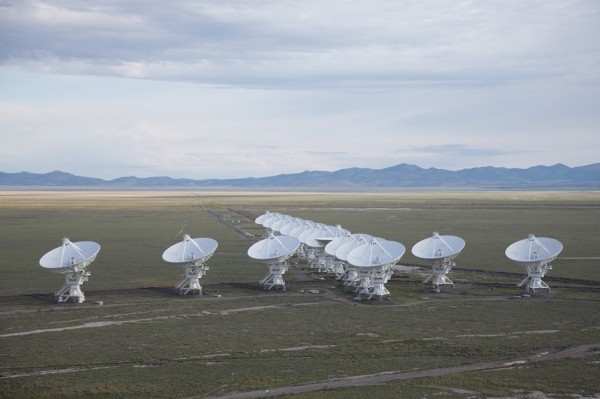By Ana Verayo, | April 08, 2016

Observations by the NSF's Jansky Very Large Array, pictured here, show that a suspected fast radio burst afterglow is actually radio emission from an active galactic nucleus.
Astronomers discovered a signal from the most distant part of the universe known as a fast radio burst earlier this year. After a month, the team of scientists identified the exact source of these mysterious radio signals, from a galaxy that is about 7 billion light years away.
Like Us on Facebook
These FRBs are made from high energy pulses or emissions that only last for milliseconds that can be detected from different regions in the sky after determining the location of their afterglows. Only 17 fast radio burst signals have ever been detected which spurred deep interest among the scientific community, since theories involve pulsars to aliens trying to communicate.
However, this particular FRB that was detected a few months ago has been the most significant of all since it was detected in real time, that helped astronomers identify the exact source.
In this new study, astronomers from the Harvard Smithsonian Center of Astrophysics, Edo Berger and Peter further investigated this radio signal and confirmed that this is not an FRB at all but something else.
Using the Very Large Array (VLA) telescopes, researchers calibrated one of the biggest radio telescopes in the world to specific settings in order to monitor the source of this radio burst. Researchers then discovered that this particular afterglow was fluctuating in strength, but never goes away, which is an unlikely characteristic of an FRB.
This distinct quality has been noted on past studies on FRBs however, researchers believe that prior findings missed out on the "rebrightenings". Berger says that since this radio emission goes up and down but still persists as a continuing signal, which means, that this is not a fast radio burst.
Further tests reveals that this so-called FRB is apparently a new kind of signal that is originating from the core of a galaxy that has been hosting a monster black hole inside. The bursts appear to fluctuate even if the signals were on a steady stream, which can be likened to twinkling stars that appear to be flickering in the sky due to light passing through thick gases in space.
This particular radio burst already disappeared but scientists say that they have direct evidence about the origins of these short and long gamma ray bursts which can further unlock more mysteries of the universe.
This new study is published in the Astrophysical Journal Letters.
-
Use of Coronavirus Pandemic Drones Raises Privacy Concerns: Drones Spread Fear, Local Officials Say

-
Coronavirus Hampers The Delivery Of Lockheed Martin F-35 Stealth Fighters For 2020

-
Instagram Speeds Up Plans to Add Account Memorialization Feature Due to COVID-19 Deaths

-
NASA: Perseverance Plans to Bring 'Mars Rock' to Earth in 2031

-
600 Dead And 3,000 In The Hospital as Iranians Believed Drinking High-Concentrations of Alcohol Can Cure The Coronavirus

-
600 Dead And 3,000 In The Hospital as Iranians Believed Drinking High-Concentrations of Alcohol Can Cure The Coronavirus

-
COVID-19: Doctors, Nurses Use Virtual Reality to Learn New Skills in Treating Coronavirus Patients







